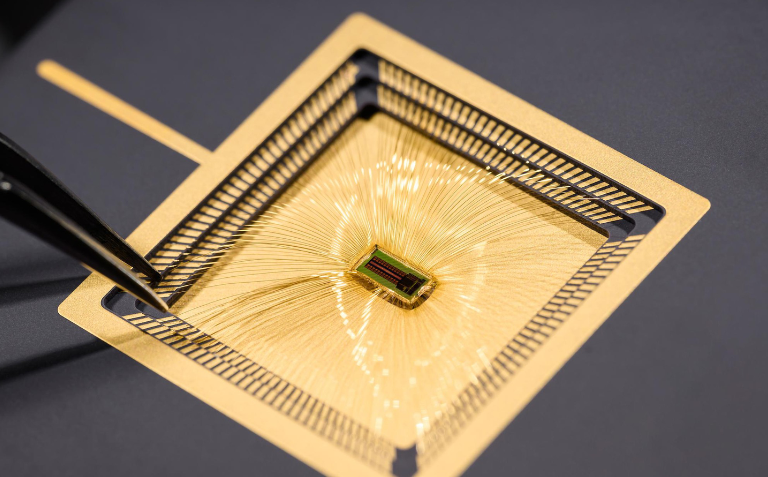
An entire brain-machine interface on a chip
Share this article
Researchers from EPFL have developed a next-generation miniaturized brain-machine interface capable of direct brain-to-text communication on tiny silicon chips.
Brain-machine interfaces (BMIs) have emerged as a promising solution for restoring communication and control to individuals with severe motor impairments. Traditionally, these systems have been bulky, power-intensive, and limited in their practical applications. Researchers at EPFL have developed the first high-performance, Miniaturized Brain-Machine Interface (MiBMI), offering an extremely small, low-power, highly accurate, and versatile solution.
Published in the latest issue of the IEEE Journal of Solid-State Circuits and presented at the International Solid-State Circuits Conference, the MiBMI not only enhances the efficiency and scalability of brain-machine interfaces but also paves the way for practical, fully implantable devices. This technology holds the potential to significantly improve the quality of life for patients with conditions such as amyotrophic lateral sclerosis (ALS) and spinal cord injuries.
The MiBMI’s small size and low power are key features, making the system suitable for implantable applications. Its minimal invasiveness ensures safety and practicality for use in clinical and real-life settings. It is also a fully integrated system, meaning that the recording and processing are done on two extremely small chips with a total area of 8mm2. Thisis the latest in a new class of low-power BMI devices developed at Mahsa Shoaran’s Integrated Neurotechnologies Laboratory (INL) at EPFL’s IEM and Neuro X institutes.
“MiBMI allows us to convert intricate neural activity into readable text with high accuracy and low power consumption. This advancement brings us closer to practical, implantable solutions that can significantly enhance communication abilities for individuals with severe motor impairments,” says Mahsa Shoaran.
Brain-to-text conversion involves decoding neural signals generated when a person imagines writing letters or words. In this process, electrodes implanted in the brain record neural activity associated with the motor actions of handwriting. The MiBMI chipset then processes these signals in real-time, translating the brain’s intended hand movements into corresponding digital text. This technology allows individuals, especially those with locked-in syndrome and other severe motor impairments, to communicate by simply thinking about writing, with the interface converting their thoughts into readable text on a screen.
Learn more about it here.
Source: press release